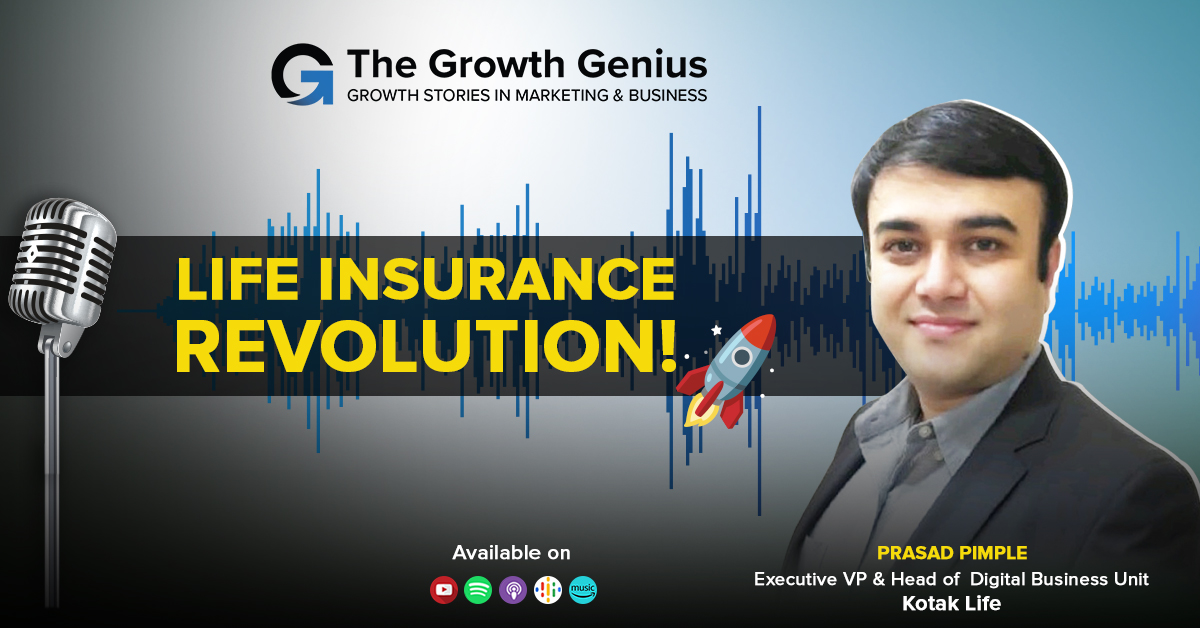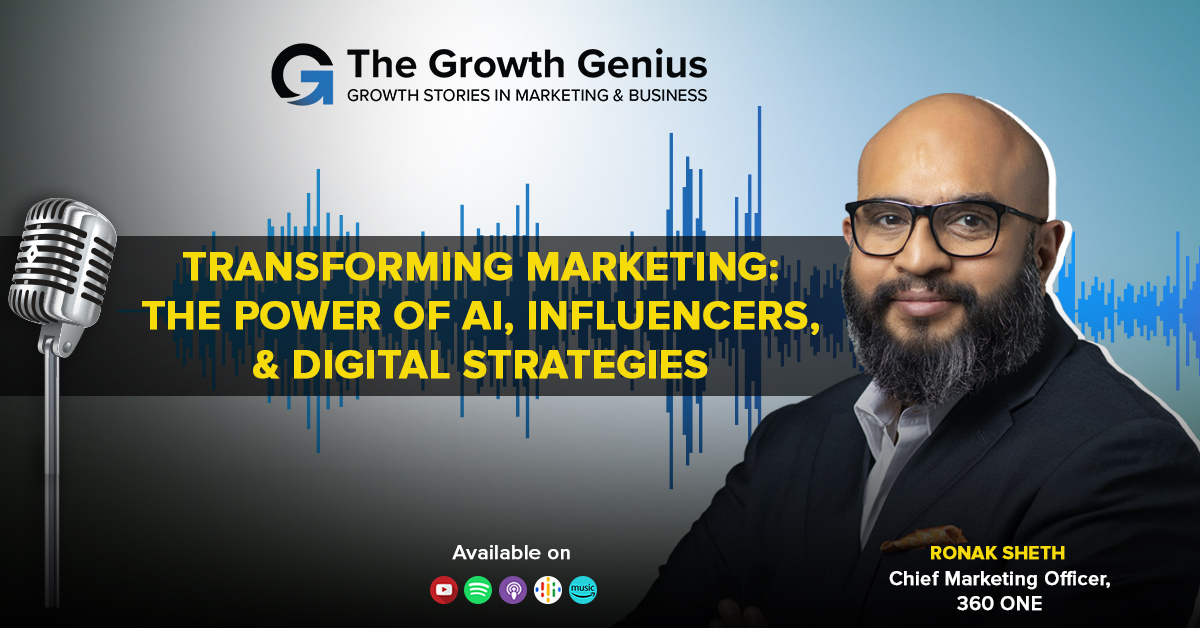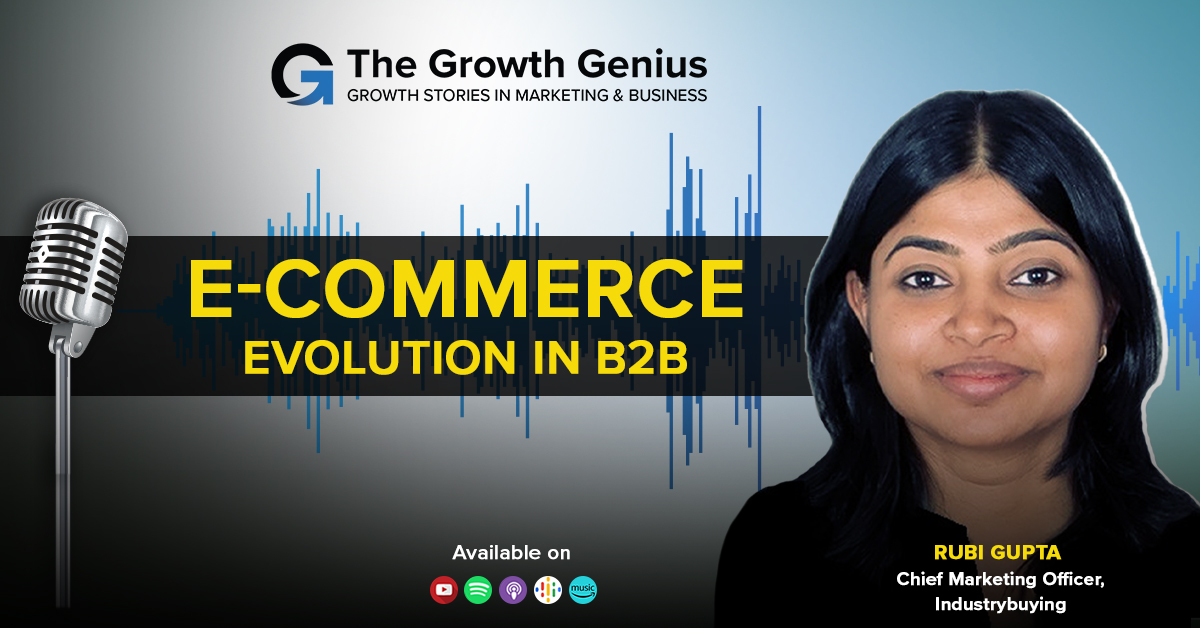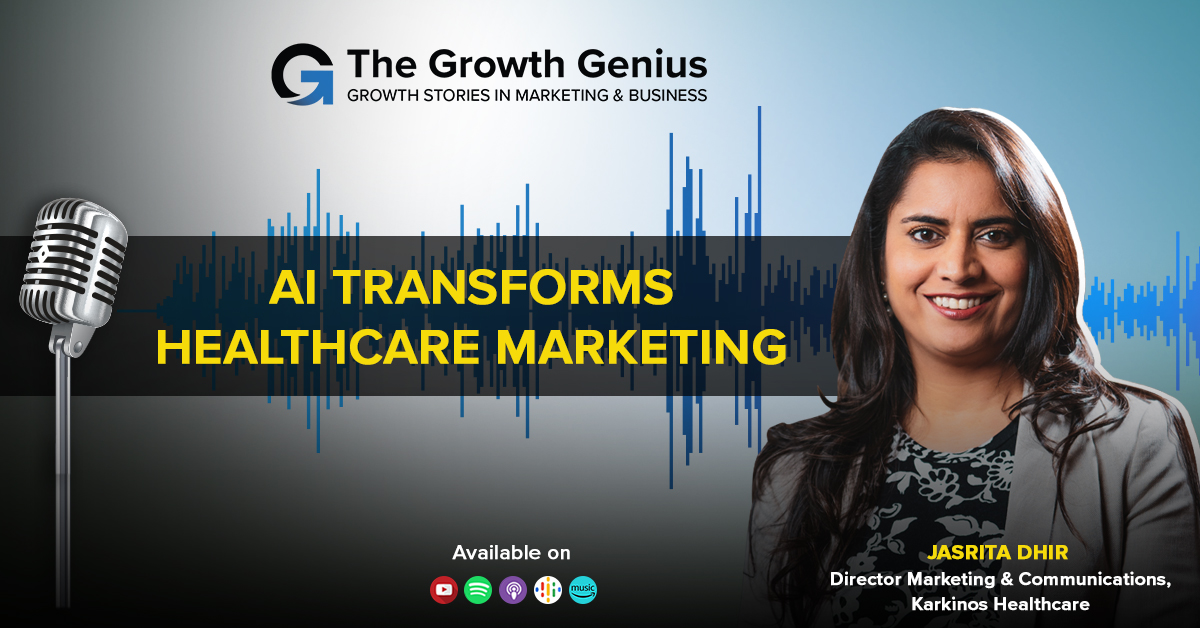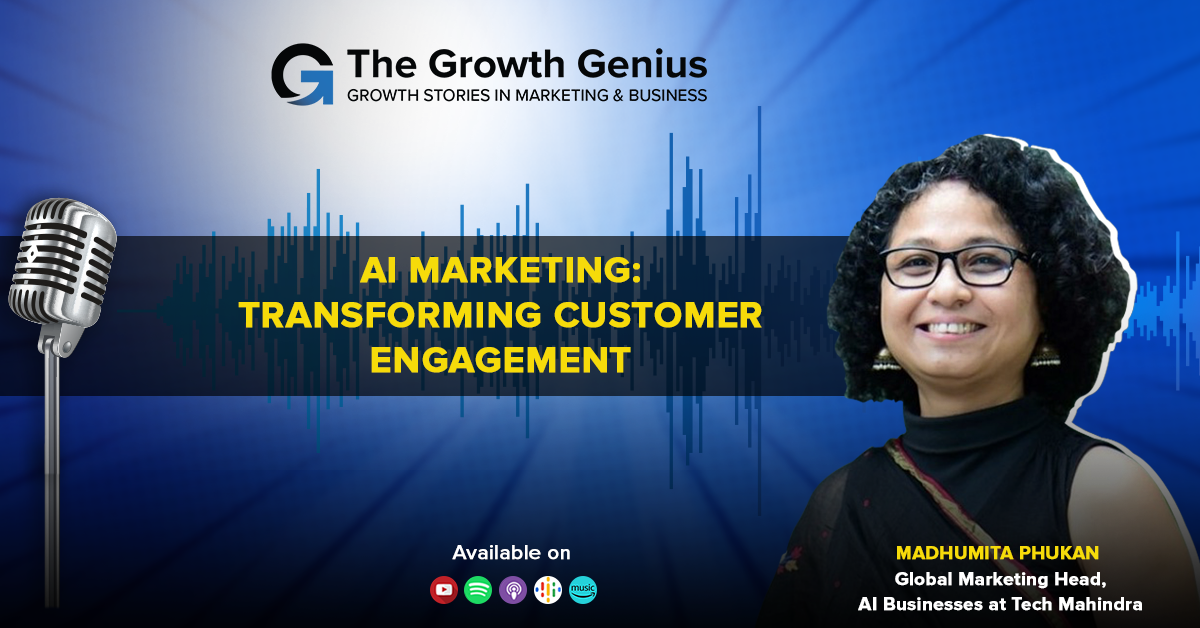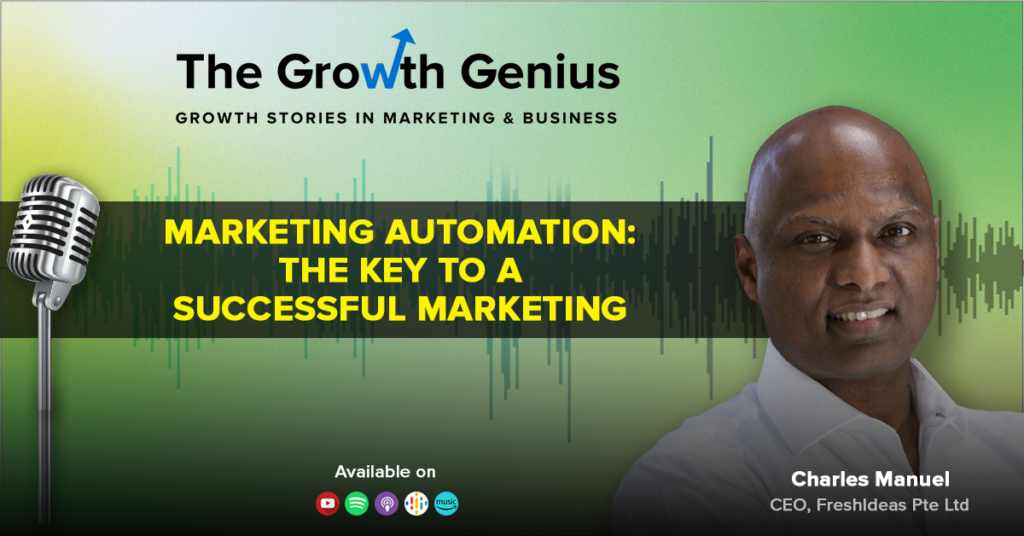
Witness an Increase in your ROI
Unlock higher rankings, quality traffic, and amplified conversions through tailored award-winning SEO strategies.
|
Getting your Trinity Audio player ready...
|
Listen on your Podcast app
Summary
In this podcast episode, Charles Manuel discusses the importance of a marketing automation strategy. He emphasizes that businesses need to leverage automation tools to streamline their marketing efforts and drive growth. Manuel explains that a well-executed marketing automation strategy can help businesses save time, increase efficiency, and deliver personalized experiences to their customers. He also shares insights on how to effectively implement marketing automation, including the importance of data analysis, segmentation, and nurturing leads. By adopting a marketing automation strategy, businesses can optimize their marketing campaigns, improve customer engagement, and ultimately achieve their growth objectives.
Key Take Aways
The blog “Marketing Automation Strategy” by Charles Manuel provides valuable insights for digital marketers. Here are eight key takeaways:
- Understand the customer journey: Mapping out the customer journey helps identify touchpoints where automation can enhance engagement and conversion rates.
- Personalization is crucial: Utilize marketing automation tools to deliver personalized content and offers based on customer preferences and behavior.
- Segment your audience: Divide your audience into specific segments to tailor your marketing messages and campaigns accordingly.
- Automate lead nurturing: Implement automated workflows to nurture leads, ensuring timely and relevant communication to move them through the sales funnel.
- Use data to drive decisions: Leverage data analytics to gain insights into customer behavior, preferences, and campaign performance, enabling data-driven decision-making.
- Integrate marketing channels: Integrate various marketing channels, such as email, social media, and website, to create a seamless and consistent customer experience.
- Test and optimize: Continuously test different automation strategies and optimize them based on performance metrics to improve results.
- Measure ROI: Track and measure the return on investment (ROI) of your marketing automation efforts to justify the resources allocated and make informed decisions for future campaigns.
By implementing these key takeaways, digital marketers can enhance their marketing automation strategies and drive better results.
Read Transcript
Charles Manuel:- Conversational AI I think is going to be massive at least in the next two to five years. The leaders are those who can combine the tech to drive outcomes, whether it is the outcome of better client acquisition, driving profitability. There used to be a time when it used to be all print where you had a lot of Investments go, but today it’s digital assets. If you’re not a storyteller you’re not a marketer, so storytelling has to be a big part, so if you have a good story your content has to be great.
Shelly Singh:- Hello and welcome to The Growth Genius series brought to you by DMAAsia and infidigit. My name is Shelly and I’m the host. In this Growth Genius series, the world’s best marketers and business leaders are interviewed about the brands they have worked on, their successful campaign strategies, how they got noticed by their customers and how they delivered better customer experiences to drive growth.
Today our guest speaker is Charles Manuel. Charles Manuel is founder and CEO of Freshideas, a boutique consulting and advisory firm headquartered in Singapore. Having served in multiple senior executive positions at global corporations, Charles combines deep domain expertise as a technologist and marketer with a fine art of storytelling to help clients transform and scale their business. Charles also advises private equity and venture capital firms in the areas of value ecosystem, enterprise transformation, cultural diversity, leadership and transformation agenda. A regular speaker at industry events, he also sits on the board of various corporate and non-profit organizations. Great to have you, Charles.
Charles: – Thank you. Thanks for having me.
Shelly: – Great. So my first question is that you had leadership roles like CMO, CSO and now you are the founder and CEO of your own company. Tell us about your experience and how did you get the idea of leaving your job and then start your own consulting firm?
Charles: – It is not like an aha moment I had where one day I just chose to just leave something I had been doing for 25 years and just move. It was like an evolution; it was a thought process that had been going on for a while. I had been in large corporations for a very, very long time, for almost like I mentioned 25 years, so a long time and great organizations. Each of these organizations were marketing and category leaders whether it was technology or whatever space they were in. And when you’re with large global organizations, there’s a tremendous amount of learning and I was very fortunate actually to have learned a lot in each of these organizations in the different assignments. So in a way the decision to move out of a setting which is very familiar is all the more difficult especially because you’re doing well, because you have a lot of, you know, what you call sponsorship and your networks are in place, you know how to get things done. So it was a very gradual process where I was getting to a certain age and then you are looking at peers making certain changes in their careers. It gets you thinking and of course when you have good friends, some friends are a little more vocal about giving you advice, giving you suggestions and some are little more discreet and among those who are more voicing their opinion, you had a few who were saying listen it’s time you start creating something for yourself rather than something for others, because when you’re in a large organization however senior you go there is always the thinking that what you’re creating is for someone else, you know, because eventually. So I had made a conscious choice to move from a $100 billion large corporation to a relatively smaller corporation which is around $5 billion business and I was in a senior role. And then after I finished that assignment there were few things that happened that really accelerated this decision. It was that role where I was the chief marketing officer of a fairly large close to a billion dollar P&L and I realized the complexity that was there because for the first time I was on the user side. I had been on the sell side in technology but as CMO of a relatively smaller organization, I was actually deploying technology to make my marketing processes work. And I realized how complex it was, how difficult it was and how inefficient it was in spite of my own balance sheet being hit by hundreds of thousands of dollars in cost each month. And it was so disproportionate between what was being spent and what value was coming out and so there was a sort of thinking that if I do something it would be about how can you make technology easy to use to drive outcomes. And so there were two or three of these things, some by design and some by providence that I finally took the plunge in 2018 when I got an assignment to consult for someone because it was a very interesting assignment to the private equity firm. And so it was really a combination of a lot of things coming together, that’s why I’m saying half by design, half by providence. But it’s been fascinating.
It’s been close to four and a half years now being out of corporate. It’s sometimes strange not to have multiple secretaries taking care of your admin or people taking care of your travel, you know, but that’s the fun of, you know, stepping out of your comfort zone, not having a lot of staff and layers and layers of support functions. You’re doing things on the move but I’m spending 98 of my time in front of customers and that’s the best part.
Shelly: – And be your own boss.
Charles: – Absolutely I mean I think it gives you a certain amount of freedom to do things. There are times you’re working 16 hours, there are times you’re working three and doing things that you love. There are times you can make time for yourself. So I think probably as you age and then as your mind is filled with stories, there are things that really inspire you and motivate you. Those things change as well. So I guess your point on being your own boss it’s also about being your own boss in terms of your time, your own boss in terms of what you do when you do, so you have sure there’s a lot more liberty and flexibility in those things.
Shelly: – That’s great. So my next question is that marketing like any area in business has been in the process of getting automated over the years. Please tell us your views on how marketing automation is transforming the way marketing gets done?
Charles: – I mean if you look at technology spend marketing is probably it’s arguably you can say that marketing is the space which is absorbing the highest amount of tech consumption and you might have to be specific of what you mean because tech is not just the compute network or the data that you used to think about, the big servers and the hardware, et cetera. But today tech transforms into so many areas like when it comes to advertising and promotion, there used to be a time when it used to be all print where you had a lot of Investments go, but today it’s digital assets. The way content gets created is so much more intuitive, interactive video content, AI infused. So the marketing executive or the marketing leader of CMO is easily the biggest persona when it comes to tech, when you’re selling tech the CMO is one of the biggest personas that you’re really going after because it’s a very massive area where tech is getting in. But what’s even more interesting is it’s just a surface that has been scratched because if you really lay out marketing automation, there’s a very famous, you know, topology map that is there online that gets published where there’s one person who’s been publishing the number of marketing automation tools that has gone from 4,000 to 6,000 to 8,000, it’s a matter of time there are more than 10,000 tools. But of course you’re going to have consolidation, not everyone is a platform leader, right.
So, you’re talking about automation playing a very big role in this whole thing about how you find your customers, how you engage your customers, how you transact with your customers and how you retain your customers. And if you see how technology can play a role in that whole life cycle whether it is B2C or B2B, then it is massive. You’re talking about a very long opportunity cycle we are seeing when it comes to the role that technology will play and not just the automation but optimization of various marketing processes.
Shelly: – Yeah. We all know that the marketing industry is evolving, right? so sales and marketing automation isn’t just for the big brands with big budgets anymore. So without proper tools in place you can’t achieve the scale in revenue goals and bring growth. So what are the challenges and opportunities faced by CMOS when they make choices of integrating technology into their marketing process?
Charles: – Yeah, it’s the same challenge that leaders whether it’s a marketing leader or a production leader or manufacturing leader, each of them faced the same challenge through every cycle of innovation, Innovation always follows more or less the same trend. You have Innovation that starts in the back end in the laboratories and then that Innovation becomes available to a select few which could be either the biggest organizations, biggest corporations or governments or rich governments et cetera and then the real transformation happens when that Innovation or technology becomes democratized where the masses get access to that technology. And the classic example is something like the GPS which helps someone get from one location to the other. GPS has been there for many, many, many years but the difference is it used to be available for probably defence or certain High, you know, cost categories and segments that had access to those technologies and then you had of course the aircraft and the planes that’s why 20 years back it was a novelty. If you sat on a plane and then you saw where you were, it was such a novelty. And what happened it came to that point where you have the convergence of technology and democratization because if you go just around 10 years back, GPS did come into smartphones but it was still difficult because the price of data was so high.
I remember some of my friends getting fascinated by GPS coming onto their smartphones and they started using it and then they got their telephone bills and their data cost got busted, right. They had like one of my friends had a $1,000 telephone bill because he used the GPS. So the real transformation happens when an ecosystem evolves not just about the technology being available to many, but also various other things coming alongside which makes it affordable because the price of data started falling as well, right. Today you have almost unlimited Network capabilities that are available. That’s not a novelty to get, you know, good fat bandwidth anywhere you go. So, what I’m trying to say is that on the one side is a blessing you have so much of technology whether it is Big Data or whether it is more intuitive content that can flow especially for a marketer moving from print to text based advertising to visuals, visuals to audio visuals audio visuals to AI infused AV and video content with higher resolutions et cetera, it’s a great blessing. But the problem is when things become democratized how do you differentiate yourself, because everyone has access to the same thing.
So to answer your question, for a marketer how are they going to, for example, get access and make a difference, it’s not about you having access to “AI ” or “Big Data”. The issue, the reason the most successful brands have been able to create a mark for themselves is because they know how to drive innovation in the completeness of using those technologies. And what happens is the in everything you have the leaders the followers the laggards et cetera, the difference between the leaders and the laggards is, the leaders will know how to invest in the necessary skills and the depth to make technology drive outcomes while among the laggards or those that do not have the depth of skills, they might actually have access to cheap technology and think they are deploying technology but not know how to drive outcomes. And a classic example is CRM, customer relationship management. CRM is probably the most familiar use case for marketers. Everyone thinks about a CRM these days. Some time back CRM used to be deployed only by large organizations, but CRM today fortunately is available without spending millions and millions of dollars in license costs and implementation costs. It’s possible today to get a CRM for just say $200 a month or even less. Now does it mean those organizations, everyone who’s spending 200 are really getting those productivity gains, are really able to find more customers? Not really you still have a lot of these smaller customers who are buying CRM just like how they buy Spotify or Dropbox and they think they are automated. But the skills and the domain expertise is not there to combine it and this is the risk. You might have small organizations without knowing subscribing to many SaaS based offerings and then they don’t even know they’re actually paying 200 here, 50 there paying so much for the AWS, so much for their mail server et cetera actually spending maybe $500 to $1,000 per month and not knowing it. So that’s the dilemma about leaders and laggards of tech adoption is you cannot over simplify tech adoption. The leaders are those who can combine the tech to drive outcomes whether it is the outcome of better client acquisition, driving profitability. And so that’s going to be the challenge about how – but having said that never has so much been available to so many whether it comes to knowledge or access to so much. So whoever picks down and builds those competencies, builds those skills, combines skills with process with tech, i think they will be the winners.
Shelly: –Great, very valid points. My next question is, of course, on the optimization which you’re talking about but on AI. So AI is no longer a luxury but a must-have tool to scale in your advertising strategies but AI on its own won’t accomplish anything. How can we create a delicate balance of pairing automation, machine learning and optimization with human expertise to help prepare marketers for success in the future of an AI heavy world?
Charles: –You know, AI, Shelly again can end up being just another buzzword like big data. If you look at marketers, you’re being bombarded by different – the in thing of technology and today it’s AI of course, in fact not just AI today everybody’s talking about ChatGPT if you’ve been following the news. So you will always have buzzwords and so for marketer it needs to come back to, like I mentioned what are my main use cases, what is it that I’m trying to solve for my brand, for my organization. And whether it is AI, whether it’s machine learning or whether it’s some of the other technology use cases, it’s about how you put it to use. But since you’ve asked about Ai and ml, if you go back to the core of it let’s start with what is as a marketer what are my main challenges. When I’m a marketer what am I thinking. First I’m thinking about how I manage my awareness creation which is advertising and promotion et cetera. And then the second is the content and experience bit, do I have a content and experience strategy. The third is how do I make the best out of this whole category of social and relationships because the landscape has changed a lot in terms of these two areas, the social bit, the social platforms et cetera they are formidable and any marketer wouldn’t pick that up has ended up paying for a very bad way, right. So how those platforms can be leveraged and then you have this whole thing about monetization. How do I move those conversations to opportunities and convert them into sales and how do I make that as easy to use and transact as possible, the commerce bit. And then of course you have the data and the management. So as a marketer these are some of the things – these are like marketing 101, these are really what keeps me awake, like is my promotions and advertising the awareness creation good? Do I have a solid content experience strategy? is my strategy around social and relationships robust? Am I monetizing each of these conversations? That’s four and then what’s my data strategies, right. And overall do I have a management structure to manage this, so this is a marketer. Now what’s happening is each of these have become much more complex compared to a marketer 10 years back or 20 years back. Take social for example, leveraging social and the power of networks, if I were to do it without automation it’s almost impossible. Now with automation I can do a little bit but that’s where AI comes in. Is it possible for me now to discover the sentiments of how different segments of my target audience are reacting to certain messaging that I’m doing or a certain campaign or a certain, you know, if there’s an offer that I’m doing, If it’s a fashion brand, for example.
So what AI is able to do now is AI is able to bring the capability to mine enormous amounts of these data, those networks, those relationships that happen in the social realm to give me insights. So it’s one thing about having access to it because again some of this is not as cheap as it looks. Brands again have been very successful, the marketing technology brands have been very successful in making it look cheap because you have 100 people who are saying it’s just going to cost you $50 per month, but the marketer has to be careful. First of all, each of these are splintered. Now you could choose to go with a platform, like a Salesforce, for example, but then platforms come as expensive, right. So if you look at marketing automation you have like even if you have 10 000 marketing automation software, the real platform leaders are probably 15 to 20. they’re platform leaders and then you have maybe a few hundred category leaders, people who are really good at certain categories like lead scoring or whatever. And then you have thousands of specialist apps and components which is a long tail and then you have tens of thousands of what you call citizen apps. You just have to go into your LinkedIn inbox message where you have so many people saying we’ve got the best AI tool to help your lead, that you call citizen apps, right. Now everyone is talking about AI. So being an optimist, looking at the glass half full, there is an enormous buffet for a marketer to choose from. But looking at the glass half empty if there isn’t enough appreciation of how that AI is going to help solve any of those five to six main challenges that a marketer has that I mentioned, awareness creation, the content bit, the experience bit, the social bit and the data management bit, then it’s impossible.
So it’s very critical for a marketer to understand which phase of the journey he or she is, (a), (b) where in my different marketing functions do I need tech adoption to be made easier through AI. Yes that is where the magic happens and the good thing is you’ve got a lot of technologies available where AI makes it easy for you to start doing campaigns and conversational AI is the best way you can think of where AI is helping brands, small brands small marketers to bring their message to customers at the place where they are which is on their chat platform, for example, whether it’s Whatsapp or whatever. So it enables you to get your campaigns into their chat messages and get them to actually look at the different options they have without leaving that chat platform, now that’s AI in action. That’s AI in action which helps you get to a very, very focused audience knowing their persona after they opt in and engage them. And for me, thinking of marketing, if I looked at say a more traditional form of engagement like EDMs or email campaigns which all of us have done, if you got anywhere between a 10% and a 15% engagement rate that was massive. And suddenly you have these conversational AI based campaigns that have been launched which are having engagements between 70% and 80% now that is AI in action where you have accessible AI being able to get promotions and customer engagement to a totally different level. So you gotta make it work, that’s what matters.
Shelly: –Great. So what are some of the key areas and use cases where technology and AI are making a big difference to marketing and increasing ROI?
Charles: – That’s a great point, that’s a great question because even if you look at the way growth is being seen even in marketing automation, I mentioned advertising and promotion, for example. As much as you talk about advertising and promotion, when you talk about marketing automation, the growth is in the single digit here. But if you look at categories like content and experience that was another very big thing because of content strategy, I mean you heard that thing, right. content is king, that phrase always being true. Now that again is something that’s not growing so much. I think the last time I saw content experience was, you know, you had certain segments like video marketing where content was moving from long form text to audio visuals and especially interactive or intuitive video content, that really started growing. But social is going to be big, you know, especially I mentioned in the last point conversational AI, you know, how you’re going to have chat bots and how the conversations are going to get more and more personal between a marketer and a potential customer, I think these are specific use cases where I think you’re going to see a huge uptick in terms of both Investments and options that are available to marketers.
The other big thing that I feel is going to be massive is the whole governance bit because you got on the one side marketers and brand leaders having access to a lot of information, you know, and some of that is not through legal means. For example you have regulation in certain countries where if, for example, you go and try to engage with someone who has opted out even if it’s an email you can get sued and then it’s a big range of markets where you have some places where the regulation is not so strong. So what’s going to happen is you’re also having a lot of technologies, marketing automation technologies that are coming in this area of helping marketers leverage the power of ai and tech but be on the safe side of regulations, you know, with its data governance or there’s a new category called Universal Data Authorization, by the way UDA which really helps a marketer who has data scientists to mine the data at the same time be within the regulatory limits, that means be in a safe swim lane. So that area around in the broad category of data, the area of governance, cyber security et cetera is again getting into a big investment phase.
So I would bet on things like, you know, interactive content which will be very big how like I mentioned, you know, GPS became big not just because the commoditization of GPS as a technology, but also the ecosystem around it that enabled data to get compressed and for you to get that seamless access. So content will continue to be big but probably more around video content, intuitive interactive content definitely conversational AI marketing , you know, how you leverage chat platforms. Especially post pandemic you have a lot of even business conversation that moved to WhatsApp for example and every brand is thinking how can I, there are I think around 30 odd chat platforms around, you know, platforms like WhatsApp and Instagram being right up there. I think WhatsApp has like 2.5 billion users. So every marketer is thinking how am I going to make use of that base of 2.5 billion people who are spending a lot of time on their chat platform. So conversational AI I think it’s going to be massive at least in the next two to five years and then cyber security compliance regulatory aspects which are the control functions will definitely be a big area where marketing spend will go.
Shelly: –So you have already spoken about some of the technology which is most important to have, but my this question is going to be more specific around that. So what are some of the most must have efficient automation tools? That’s my one part of the question and the second is, which emerging technologies will reshape digital advertising?
Charles: – I still believe like I said, you know, my own story, if you’re not a storyteller you’re not a marketer, so storytelling has to be a big part. So if you have a good story, your content has to be great. So I come back to the basics, content is king, you have a great content creation, content curation, content propagation strategy, so I would put that as a baseline. Now you may use different content management platforms or might find a way to have content creation, content aggregation, how you want to play with your content, how you’re going to play with all that storytelling you’re doing, how you’re going to run your campaigns making use of that content, so that bit I would put very, very fundamental.
Second is data, data is a new currency. I’ve been fascinated, this word data is the new currency when Big Data became such a big fashionable term around say 10 years back, 10 -12 years back, you know, when Big Data was coined and you had various marketers getting into that bandwagon as well. But it’s amazing where even after 10 to 15 years how many organizations are still laggard in making use of data. Of course that’s also because you have the big four or big five like the Amazons, the Googles of the world who are really having a stranglehold of all that data which is proprietary, right. So it used to be called “Walled Gardens” and in the world of data walled gardens it’s almost like these large organizations have created a proprietary hedge for themselves having so much content around. So now some of those things will break, right. so I feel as those strangleholds on that data breaks down, every marketer has a clear data strategy. So you have a content strategy, then you need to have a clear data strategy and it’s possible now through various data management systems. Data management is not just about, again this is also fascinating because many organizations as a result of access to cheaper CRMs, in their mind they’re still thinking that data management means having a customer database. That’s simplistic thinking, but the smarter ones can make data work for them in many, many, many ways more than just having a repository. Repository is like a very fundamental use case when it comes to data management.
And then the third is definitely how you engage customers through the social and the networks that I mentioned. As a marketer, how do I make sure that, so I’ve taken care of my content, it’s no more that my content is printed as in brochures, it’s in digital content, it’s interactive, it’s intuitive. I’ve got my data in place, which means I know who I need to speak to, what I need to tell them at what time, at what point. The third bit is how do I engage with my customer where he or she is and that comes down to this whole thing of social chat conversational bit, conversational AI language. So which are the vehicles that I’m going to use to engage with my prospects and my customers and this is where the legacy thinking was I will go and put an advertisement in the newspaper or this magazine which has a circulation of a million copies, that’s traditional thinking. And then that becomes a big problem because legacy marketers have found it very difficult to come out of that thinking because in today’s world it’s not enough for you to just take care of awareness. How do you monetize that awareness? How do you convert that awareness into conversations, and how do you monetize those conversations? And as everyone is moving towards a recession and you’re talking about money markets getting tight, interest rates going higher, the first place which is going to come under pressure will be advertising, will be promotional budgets.
So marketers are going to have to think so much more on how do I make sure that the content that I put, the technology that I use is going to as focused an audience as possible so that the demand side is accelerated because if the demand does not follow the awareness every marketer is going to come under pressure because every CFO is on a warpath with the marketers whether it’s a small company or a large company because the next 12 to 24 months you’re going to see a massive, massive correction in terms of availability of cash.
Shelly: –Yeah, so this is very interesting. I just had another very interesting conversation with one of the speakers on marketing accountability. So marketing accountability is going to be big , you know, because like you said that CFOs want to know where are you spending all your money and then, you know, how countable you are and you have to make very wise choices, very, very wise choices. So this is great, you said that the most important three things, one is content and then second you said data and then third you said engagement or conversational AI. So these three things are going to be like.
Charles: – The engagement platforms, that’s what I mean. You’ve got to choose the platform through which you’re going to engage with your customers wisely. That’s really important.
Shelly: –Yeah, so that’s great. So my next question is: how do you as a practitioner of marketing and former CMO keep up with the latest and the best in marketing when it comes to advising your customers?
Charles: –I think it goes to that point about if you love something, right, I mean for me there are two areas where I have devoted my life, one is the life of a marketer and a storyteller and the other is just studying and being in the space of technology and how that has impacted the storytelling, it’s these two things. So when you love something, you’re not really working. So you will always find ways to be in touch with it whether it’s your reading or where you spend time with who you spend time with. I love to be connected and my network is filled with people in these two areas marketers and technologists and when I say technologists, it’s not also about people who are stuck in time and just focus but especially technologists who are agile, who are always future thinkers in the world of media and the world of insurance, you know. And so it’s who you spend time with and what is nice these days is through platforms like Twitter, for example, you can choose who you want to be really close to and who do you want to listen to, you don’t have to really meet that person but you can get to the thinking of these thought leaders if you’re following some of these people on these threads of social media et cetera.
It’s also important for you to take out the noise because there’s so much noise, so you sort of choose who you want to listen to but like I said if you’re really interested you will always find time to stay in touch with your topic through your reading, through your research. And especially when you’re a consultant or an advisor, you know, advising clients and you have clients who are making choices based on what you tell them, then you have a bigger responsibility to be wary and careful about what comes out of your mouth. You can’t just, you know, wing it and for sellers especially if you’ve been in sales, you used to call it winging where, you know, just enough to have a conversation with a customer and you just sort of, you know, you just move along. But when you’re on the other side when you’re charging for your time, when customers are calling you in to get your insights and paying you for it, you have to be methodical. So sometimes for a one hour session with a CEO, I could prepare maybe 25 hours, you know, 25 hours of research could go in, for a half an hour meeting or a 43 minute meeting. So there is no shortcut to any area if you want to be a thought leader and thought leadership comes from being deliberate, being intentional. So is there effort that goes in, yes, but the effort is going into something that’s fun, it’s not a chore, doesn’t feel like you’re studying for an exam.It’s like you’re pursuing a field which you are really interested in and you’ll always find a way to be in touch.
So it’s no straightforward answer, it’s just something that you sort of put together and again you can’t also be so rigid in how you want to pursue that knowledge because if you’re going to say for example I’m only going to read two books per week, then that also has its downsides in my view because you could be so narrow in your thinking and miss out on the power of contradiction. There is something called The Power of Contradiction and I love to study that. That means if someone has a position a on a certain thought about marketing or technology, I like to see someone who’s contradicting that and try to see why because there is a lot of power when someone challenges and then you try to go into the mindset of how both the for and the against scene and then you make your own decision. So without complicating it, that’s my long answer to your short question.
Shelly: –Great. So I mean this is what you’re saying that this is your passion, right. So you are just following your passion and you make a business out of it. Like my son always says, you know what, do a job which is like your hobby. Great. So where can our viewers find you and connect with you?
Charles: – LinkedIn is the best, I’m very active on LinkedIn. My LinkedIn page is pretty; it’s out in the public domain. So the best way would be through LinkedIn and, you know, I’m very responsive to any messages that come on my LinkedIn. What’s good is you have a lot of people who come into LinkedIn wanting to set appointments but that’s okay, LinkedIn does a good job at filtering out, you know, people who are genuinely trying to connect with you. So for me I’m a very, very active social media person on the LinkedIn platform, so that’s the best. And if we really connect, there are always ways to find a way to connect and talk. I do mentor a lot of people from around the world, that’s the beauty of the post-pandemic world, you can engage with people through a call like this, be in different countries, be in different time zones. So I do sometimes have conversations which have started on LinkedIn and led to maybe, you know, just a casual chat on Zoom or Google Meets or whatever. I’m absolutely passionate about mentoring and coaching et cetera where I can talk to people. I love talking as much as you can, I’m sure you would have realized, I love to talk, I love to engage, I love to challenge.
Shelly: –And love to share knowledge, right, that’s most important.
Charles: – Correct and it sort of really brings out the energy on both sides. Any conversation which is engaging which has a certain depth to it I love to engage in. But LinkedIn would be the starting point. My page on LinkedIn would be the starting point for anyone who wants to connect with me.
Shelly: –Okay, great thank you so much, Charles for the wonderful insights on the role of automation and AI in transforming marketing. So I’m sure our viewers and listeners will benefit a lot out of this session. Thank you so much.
Charles: – Thanks for having me, appreciate it.
Shelly: –To all our viewers and listeners, please subscribe to this channel. If you enjoyed this episode and you like to help and support this podcast, please share it with your friends, post about it on social media, or leave a rating and review. I’ll see you next time in a new episode with a new speaker. Till then peace.


